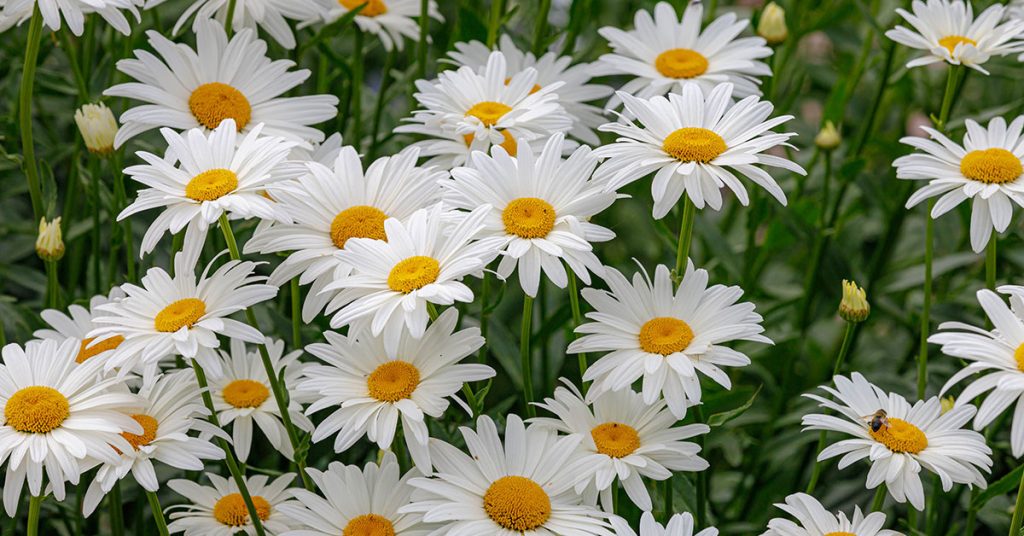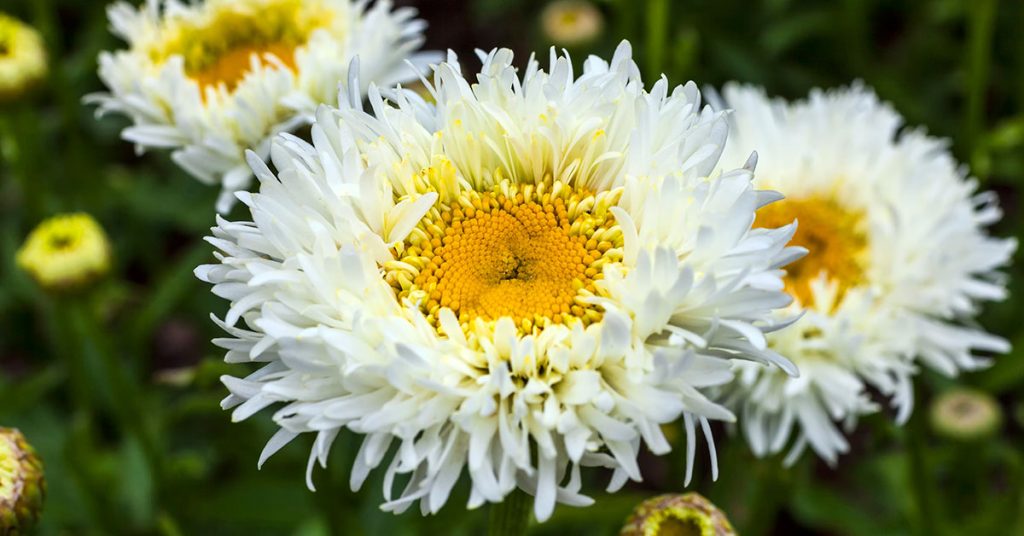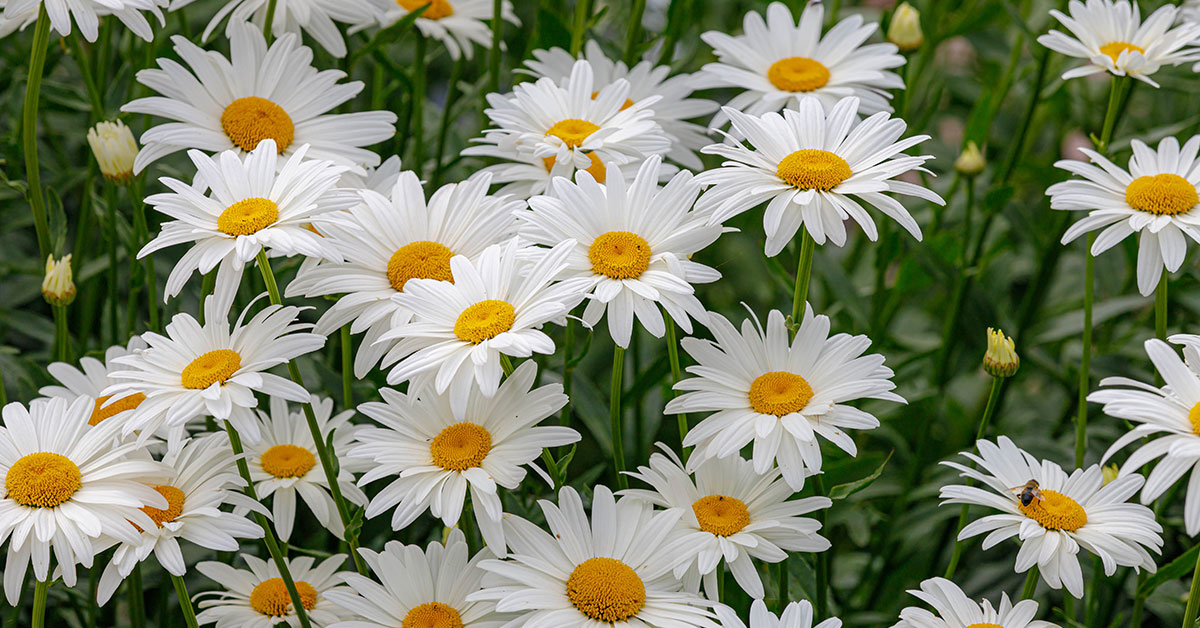Shasta daisies, with their cheerful white petals and bright yellow centers, are a popular and easy-to-grow perennial flower. Named after Mount Shasta in California where they were first cultivated, they are loved for their long blooming season, easy care, and ability to attract butterflies and bees to the garden.
Available in a range of sizes and colors, they can add a touch of brightness and charm to any garden, making them a favorite among gardeners and landscapers alike.
What are Shasta Daisies?
Shasta daisies are beautiful perennial flowers that are widely cultivated by gardeners for their stunning blooms and easy-to-grow nature. Scientifically known as Leucanthemum x superbum, these flowers are native to Europe and are a hybrid of various species of daisies.
They are popular for a number of reasons. Shasta daisies have beautiful white petals that surround a yellow center, creating a classic and timeless look that is popular in many garden designs. They are easy to care for and require minimal maintenance. They are drought-tolerant, disease-resistant, and can withstand a range of temperatures.
These flowers have a long blooming season, typically starting in late spring or early summer and lasting through the fall. This makes them an ideal addition to gardens looking for consistent color and beauty throughout the growing season.
Shasta daisies are a versatile flower that can be used in a variety of garden designs. They can be planted in mass to create a stunning display, or mixed with other flowers to create a more diverse and dynamic look.
These flowers are known to attract bees and butterflies, making them an ideal plant for gardeners looking to promote pollinator activity.
Varieties
There are a few types of Shasta Daisies that you might consider planting in your garden, depending on what you hope to get out of your flowers. These are the most popular varieties:
Single-flowered

Single-flowered Shasta daisies, also known as classic Shasta daisies, are a popular variety of the Leucanthemum x superbum hybrid that have a traditional daisy appearance. These daisies are characterized by their bright, white petals with a yellow center or “eye.”
The flowers of single-flowered Shasta daisies can be up to 4 inches in diameter, and they typically bloom in late spring to early summer, with a potential to rebloom in the fall. The stems can grow up to 3 feet tall, making them ideal for cut flower arrangements or as a border in a garden.
Double-flowered

Double-flowered Shasta Daisies, also known as pom-pom Shasta Daisies, are a type of hybrid daisy that has fully double flowers with layers of white petals surrounding a yellow center. These flowers are bred to have more petals than the traditional single-flowered Shasta daisy, giving them a fuller, more voluminous appearance.
The flowers of double-flowered Shasta daisies can grow up to 4 inches in diameter and they bloom in late spring or early summer. They can also rebloom in the fall if deadheaded regularly. The stems can grow up to 2-3 feet tall and are sturdier than single-flowered Shasta daisies, making them less likely to flop over.
Dwarf and giant
Dwarf and Giant Shasta Daisies are two other varieties of the Leucanthemum x superbum hybrid that offer unique characteristics to gardeners.
Dwarf Shasta Daisies, as the name suggests, are a compact and smaller version of the traditional Shasta daisy. They grow to a height of 8-12 inches and have a spread of 10-12 inches. Despite their smaller size, they still produce the same classic daisy blooms in shades of white and yellow. Dwarf Shasta daisies are perfect for small gardens, rock gardens, and container gardens. They are also ideal for planting in the front of flower borders as they won’t obstruct the view of other plants.
On the other end of the spectrum, Giant Shasta Daisies are an impressive and striking variety of the hybrid. As the name implies, they can grow to a height of 3-4 feet, towering over other plants in the garden. These daisies produce massive blooms that can be up to 5 inches in diameter, making them a focal point of any garden. Giant Shasta daisies are perfect for large garden beds and borders where their size and blooms can be fully appreciated.
How to grow Shasta Daisies
Shasta daisies are easy to grow and can add a beautiful touch to any garden. They thrive in well-drained soil that is slightly acidic to neutral in pH. They prefer full sun but can also grow in partial shade. If planting in hot regions, it’s best to provide some afternoon shade to prevent the plant from drying out. They prefer evenly moist soil, but avoid overwatering as this can lead to root rot. Water the plant regularly during hot, dry spells and reduce watering during cooler months.
They also benefit from regular feeding during the growing season. Use a balanced fertilizer with a ratio of 10-10-10 or 20-20-20 every 4-6 weeks.
These flowers are relatively pest and disease-free but may attract aphids, spider mites, and slugs. Treat infestations with insecticidal soap or neem oil. Powdery mildew is a common disease that affects Shasta daisies, especially in humid conditions. To prevent powdery mildew, make sure to provide good air circulation and avoid overhead watering.
Plant them in the spring or fall in well-drained soil. Space plants 18-24 inches apart and water well after planting. Deadhead the flowers regularly to promote continued blooming and prevent seed formation. In the fall, cut the plant back to a few inches above the soil line to promote new growth in the spring.
Caring for Shasta Daisies
Caring for Shasta daisies is relatively easy and straightforward. Pruning them is essential to keep the plant looking tidy and to promote healthy growth. Deadhead the flowers regularly by cutting the stem just above the first set of leaves below the flower head. This will encourage the plant to produce more blooms and prevent it from going to seed.
These flowers can be propagated through division in the spring or fall. Dig up the plant and carefully separate the root clumps into smaller sections, making sure that each section has roots and foliage. Replant the divisions in well-draining soil and water thoroughly.
These delightful flowers are hardy and can survive in cold temperatures, but they may require some protection in harsh winter conditions. Mulch the plant in the fall with a layer of organic material to protect the roots from frost. In areas with heavy snowfall, brush off any snow that accumulates on the plant to prevent it from breaking.













